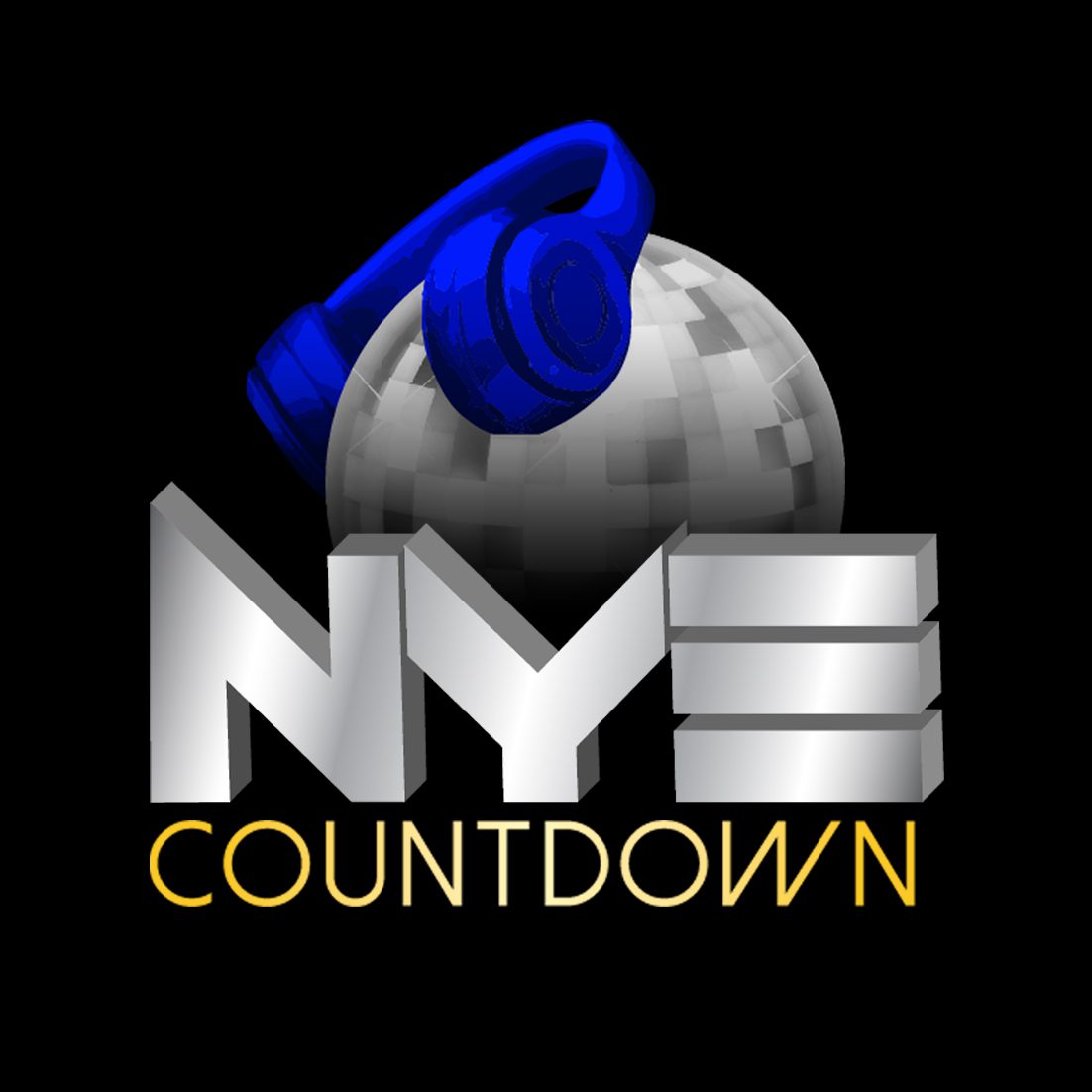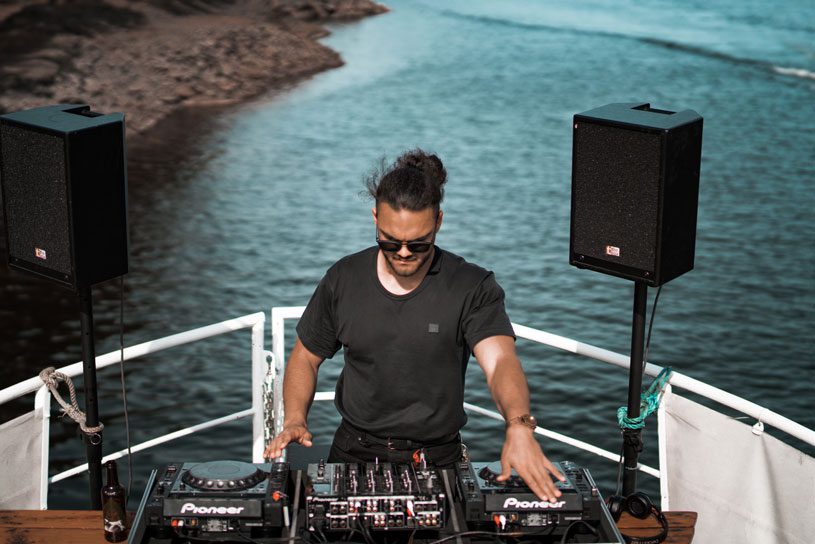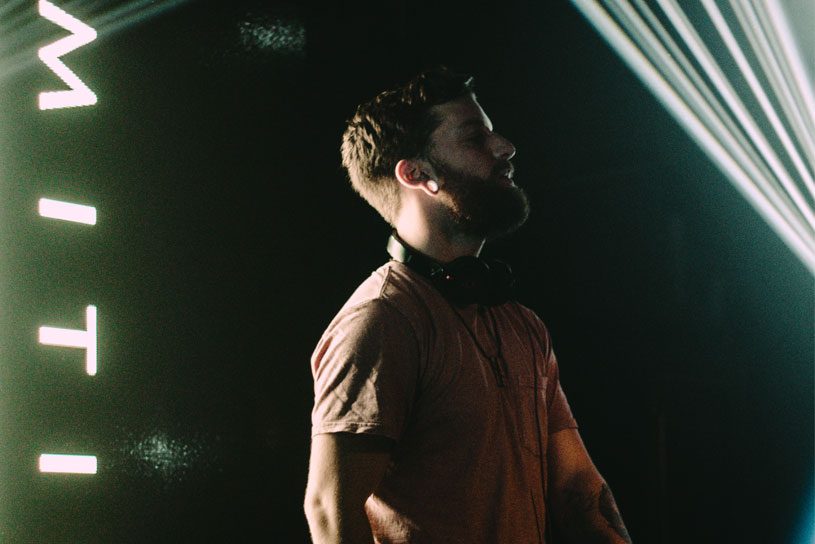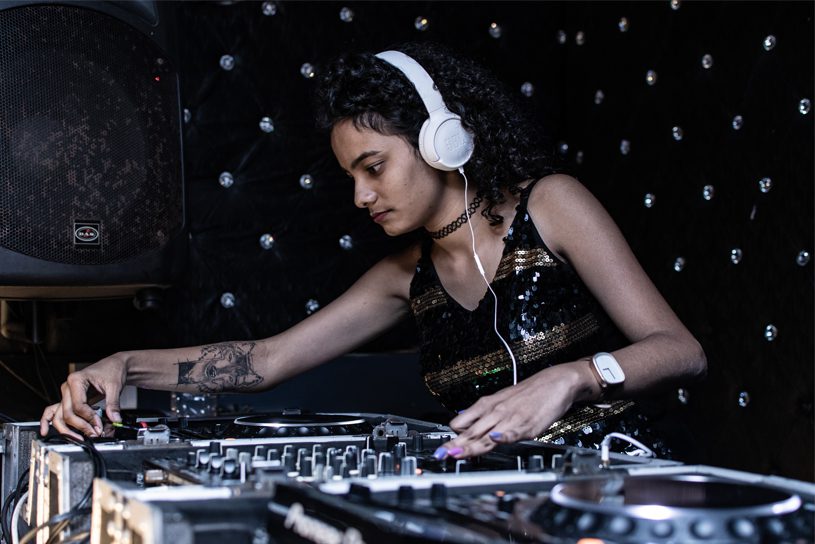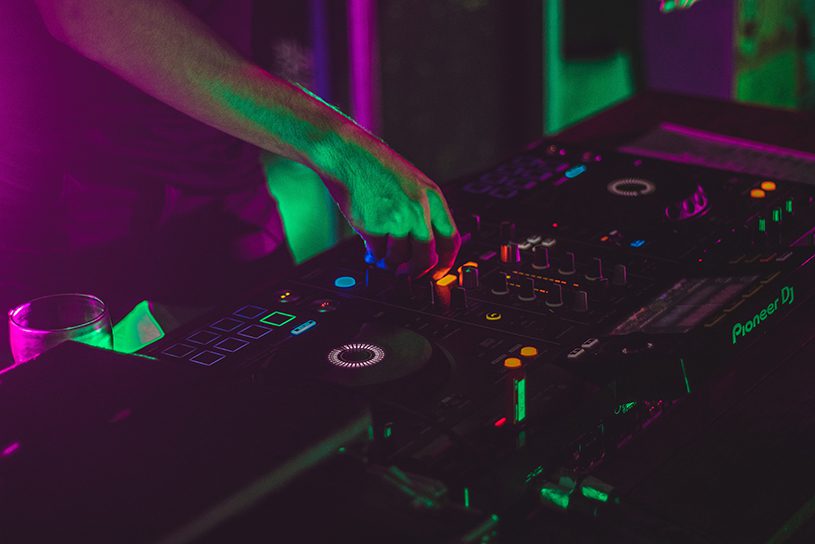In our previous post, we discussed the basic equipment every beginner DJ should be familiar with. To recap: every DJ needs to select an audio source and choose which DJ software to use. They also need to choose their turntable, mixer, and/or controller and have a backup storage method for their audio. This equipment will get any DJ started with mixing music.
However, when performing a gig at a venue, a DJ often needs more DJ equipment than just the basics. New DJs may not realize how much else goes into making a DJ look and sound their best during a performance. Never fear, Pro DJs. As part two of our comprehensive guide to DJ equipment, the following is a list of some commonly overlooked equipment that is needed at most gigs. At the end of this post, we’ll also go over a list of non-equipment, but still essential items that every DJ should bring to their gigs.
Speakers/PA System
Chances are, if you’re playing at a bar or club, they will have a sound system your laptop or other equipment will plug into. However, if your gig is at an outdoor venue or another site that isn’t used to hosting DJs, you may need to bring your own speakers and PA system.
Your speaker rig will depend largely on the size of the venue and the size of the audience. It also will depend on how much money you can invest into the setup and how portable you need it to be. You’ll want to do your research on your options and determine what you need, but here is a basic rundown.
You can get all-in-one PA systems that include a mixing board, amplifier, subwoofer, and speakers. Most also include a couple of other items later in this list, including microphones, adapters, and cables. An all-in-one system is going to be more expensive and difficult to cart around, but it will include everything you need for most gigs.
PA systems are either battery-powered or include an AC adapter, so you’ll want to decide which setup you need. JBL, Yamaha, and Bose make some quality PA systems with a variety of price points, portability, and other features.
You can also get components of a PA system separately to maximize the quality of your setup or eliminate items that you don’t need. At a minimum, a DJ should have a quality subwoofer and speakers that are compatible with their DJ equipment setup. Bose, Behringer, and Yamaha are some top brands for speakers that you can investigate.
Microphone
If your PA system doesn’t come with a microphone, you’ll want a good quality mic to go with your setup. DJs do a surprising amount of talking during their sets, and you’ll want to be heard over the music and general noise of the venue. Cheaper microphones generally have poorer sound quality, so this is one purchase you shouldn’t skimp on if you want good quality sound.
Most DJs will use a condenser-style microphone with a unidirectional pickup pattern. Condenser microphones are durable and portable while still providing good quality sound. Unidirectional audio pickup means the microphone will only pick up sound in the direction it’s pointed towards while muting the sound around it.
You can choose either a wired or wireless microphone for your DJ rig. Keep in mind the types of venues that you play, and your overall setup to determine which microphone is right for you. Shure and Audio-Technica have a variety of both wired and wireless microphones.
Adapters and Cables
Typically when you purchase your PA system, microphone, or mixing equipment, the cables and adapters needed will be included. However, it’s always a good idea to have backup cables and adapters, in case something goes missing or is damaged.
In general, a DJ will be dealing with cables such as RCA, digital-optical, XLR, USB, ethernet, firewire, and more. Become familiar with the cables and inputs your equipment requires and purchase extra cables to keep in an “emergency kit” with your gig supplies.
Lighting
Most venues are adequately lit for the proper mood, especially bars and clubs. But if you’re a wedding DJ, or you’re DJing an outdoor event, you will likely need to bring your own lighting rig. Dynamic lighting for the dance floor or stage sets the mood, energizes the crowd, and provides adequate lighting to your setup. It’s a little hard to mix music in the dark, after all!
A basic lighting setup for a DJ will include a lighting stand and some general PAR lights that shine over the crowd with an array of colors. Most lighting setups can be controlled digitally, set on a timer, or synchronized to the music for maximum effect. Depending on your venue, you may also want to invest in up lights that cast a color wash onto walls, or floodlights to provide vast swathes of light over the crowd. Keep in mind, you don’t want to blind your audience. You also want to be able to see what you’re doing! So don’t forget to light your table.
Table
Speaking of a table, this item is often overlooked, but a good table for your equipment is essential for mobile DJs. Clubs and bars will usually have a setup for you already, but outdoor venues or small parties might not have a table they can spare. A sturdy, portable table is essential to have in case you need it to set up your equipment. You can go as simple as a folding table or get a rolling DJ booth that has more room for your wires and equipment. Whatever you decide, the most important thing is to determine how comfortable you’ll be standing at the table for hours at a time.
Non-Equipment Checklist
Now that you have all your equipment and a table to put things on, our final mini list in this comprehensive guide to DJ equipment is a checklist of essential, non-equipment items. Some of this may seem obvious, but it’s a good idea to have this list printed out or in your phone’s notes before a gig. This way you can check off items as you pack for your performance, and you won’t forget anything.
- Keys and Wallet
- Phone and Charger
- Emergency Kit (Water, Snacks, Medication)
- Change of Clothes (You’ll probably be sweating and may want to change before heading home.)
- Toiletries (Deodorant, Gum, Toothbrush, etc.)
- Earplugs (Protect your hearing!)
- Business Cards (You never know when networking opportunities might arise.)
- Flashlight (For those dark venues!)
- Tool Kit (Screwdriver, Pliers, Electrical Tape, etc.)
- Cable Management (Keep the “cord spaghetti” under control to avoid tripping.)
Break A Leg, Pro DJ!
We hope this guide has been helpful to you as you continue your journey to becoming a pro DJ! These two lists just barely scratch the surface, and you’ll likely need to do more research on the types of equipment you want to use. However, we hope that this guide will give you a starting point in your research, so that you may flourish when it comes time to perform your first few gigs!
If you want to make your set even more special, consider a custom DJ Drop from NYE Countdown to get the crowd bumping and to make sure everyone knows your name. Get in touch with us or browse our shop for a complete list of products to make your set sound amazing!
